Choosing the right production method for metal fibers is crucial for achieving optimal performance. Whether it’s for precision filters, electromagnetic shielding, or material reinforcement, the method affects the final product’s properties. With so many techniques available, how do you select the best one for your needs?
We’ll break down the four main manufacturing methods: Cluster Drawing, Melt Spinning, Cutting, and Mechanical Vibration Machining. We’ll explore each method’s unique advantages and applications, providing insights into which technique best suits your specific requirements. Plus, we’ll dive into the types of metallized fiber products, such as sintered metal fibers, short fibers, and metallic fiber yarns, and discuss how they’re used across industries.
What is Metal Fiber?
Metal fiber is a kind of fibrous material with a certain ratio of length to diameter prepared by a certain processing process. Its wire diameter is generally in the range of 1-100 μ M. Metal fibers exist in both long and short fibers (length/diameter ratio less than 100). Metal fiber not only adheres to the inherent good performance of metal material itself but also after fibrosis, its application scope has been greatly expanded.
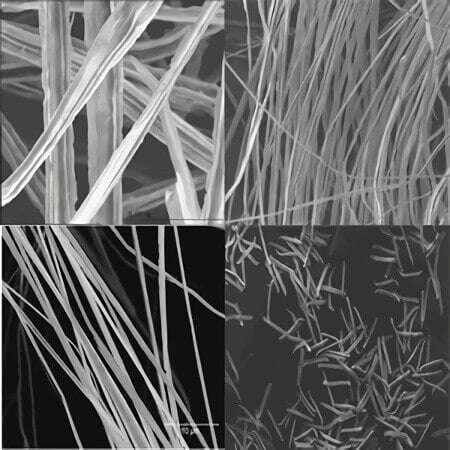
Properties of Metal Fiber
The processing of metal fiber has changed the internal structure, magnetic properties, resistivity, and surface properties of the raw materials significantly, which makes it develop from traditional materials to fiber composite materials with high-temperature resistance, corrosion resistance, excellent conductivity, thermal conductivity, flexibility, and spinnability.
Compared with other fiber types (such as carbon fiber, glass fiber, aramid fiber or natural fiber), metal fiber has lower resistance. This makes them suitable for any application that requires conductivity. Their excellent heat resistance enables them to withstand extreme temperatures. Corrosion resistance is achieved by using high-quality alloys in stainless steel or other metals.
Sintered metal fiber structure and fiber mat show high porosity characteristics while maintaining a strong and durable structure. This facilitates the function and structure of specific applications, such as metal fiber filters or electrodes.
Typical Application of Metal Fiber
Thanks to the good conductivity and thermal conductivity, high corrosion and heat resistance, as well as excellent EMI and ESD shielding capability, stainless steel fiber is used in many consumer and industrial applications in various fields throughout the process. Fecraloy (Fe Cr Al alloy) fiber is even more resistant to high temperature, which is commonly used in the vehicle exhaust pipe and high-temperature filter felt and metal fiber burner. Nickel shows excellent electrical and thermal conductivity to chemicals, acids, and bases, making it suitable for a variety of applications.
Metal fibers are made using various methods, each impacting specifications, efficiency, cost, and quality. The production process is key to the fiber’s performance. We will focus on four main methods: Cluster Drawing, Melt Spinning, Cutting, and Mechanical Vibration Machining.
Cluster Drawing Method
Cluster drawing is one of the most common methods used to manufacture metal fibers. This process begins by bundling thousands of filaments together into a composite wire, which is then pulled through a mold to reduce its diameter. After the fiber reaches the desired size, the covering tube is dissolved using acid, leaving behind a continuous metal fiber. This method allows for precise control over the fiber’s length and diameter, ensuring consistent quality. Cluster drawing is ideal for high-performance applications requiring durable and fine fibers, such as high-temperature filtration and electromagnetic shielding.
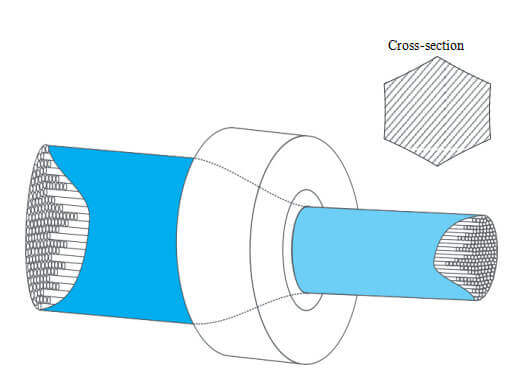
![]()
Foil Shaving Method
The foil shaving method involves cutting thin metal foils into fibers, typically with diameters starting at 14 μm. This process creates semi-continuous fiber bundles with larger cross-sections compared to fibers from other methods. Foil shaving is most effective for creating thicker fibers for use in robust filtration systems. While it is a low-cost method, it produces fibers with less flexibility and precision, making it less suitable for applications requiring fine control over fiber dimensions.
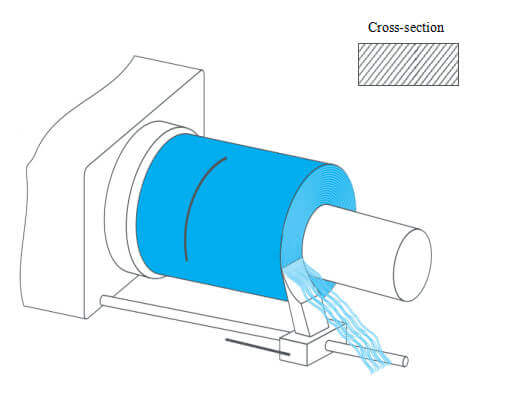
Mechanical Vibration Machining
Mechanical vibration machining is a specialized method used to produce short fibers as small as 10 μm in diameter. The process involves using vibrations to manipulate the fibers, ensuring uniformity and precision in fiber geometry. This method is particularly useful in applications requiring high-performance filtration, where consistent fiber distribution is critical. Despite its more complex setup, mechanical vibration machining offers excellent control over the fiber’s characteristics, making it ideal for high-precision applications.
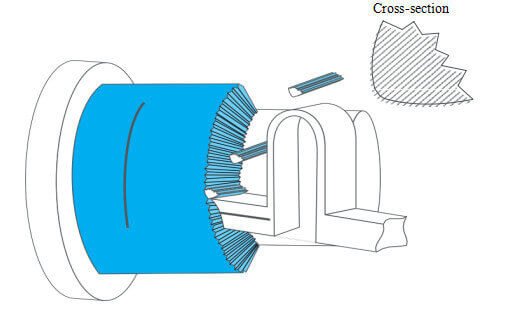
Melt Spinning Method
Melt spinning involves the rapid solidification of molten metal onto a rotating cooling wheel, creating continuous fibers with diameters ranging from 25 μm to 250 μm. The cooling speed and immersion depth control the fiber’s shape, which can vary from a crescent to an arc. This method is efficient and cost-effective, ideal for large-scale production. However, melt-spun fibers are generally rougher and less precise compared to those made using methods like cluster drawing. Melt-spun fibers are widely used in applications such as concrete reinforcement, where high-volume production is essential.
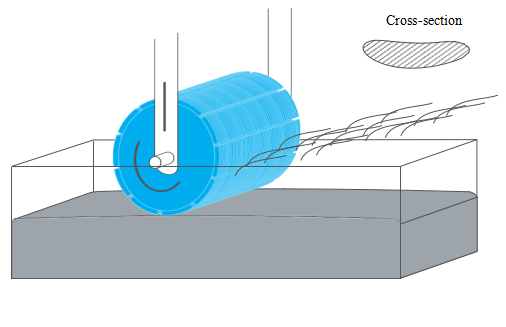
Comparison of Metal Fiber Manufacturing Methods
To help you understand the differences between these methods, here is a detailed comparison based on key factors like production efficiency, fiber properties, and suitable applications. This table will highlight the strengths and limitations of each method, allowing you to make an informed decision based on your specific needs.
|
Manufacturing Method |
Fiber Diameter Range |
Production Efficiency |
Key Applications |
Cost |
Mechanical Properties |
Advantages |
|
Cluster Drawing |
10 μm – 100 μm |
Medium |
High-temperature applications, filters |
High |
Strong, durable |
High control over fiber length and diameter |
|
Melt Spinning |
25 μm – 250 μm |
High |
Steel reinforcement, concrete |
Medium |
Moderate |
High throughput, low cost |
|
Foil Shaving |
14 μm (min) |
Low to Medium |
Large-diameter fibers, filtration |
Low |
Lower mechanical strength |
Produces thicker fibers |
|
Mechanical Vibration |
10 μm |
Medium |
High-precision filtration |
Medium |
Very fine, uniform fibers |
High precision, consistent fiber geometry |
What Are The Types Of Metallized Fiber Products?
From sintered metal fibers and short fibers to polymer particles, nonwoven fabrics, and metallic fiber yarns, each type has its own unique benefits, whether it’s for filtration, conductivity, corrosion resistance, or electromagnetic shielding.
Sintered Metal Fiber Medium
Stainless steel fiber is transformed into fiber medium, which can be a non-woven or sintered structure composed of fibers with a certain diameter of 2 to 80 microns. These porous metal fiber media have been widely used in high demand applications because of their uniqueness.
As stainless steel fiber felt has a unique three-dimensional deep filter structure, it has a high capacity for pollutants, which can greatly improve and extend the service life of the filter. The basic material of the material is stainless steel fiber, so it also has very good mechanical strength and toughness at high temperatures and can work in high temperature and high corrosion environment at 550 ℃. One of the biggest characteristics of the metal fiber felt is that it has an excellent filtering effect on the polyester condensation and the plastic which are easy to be deformed.
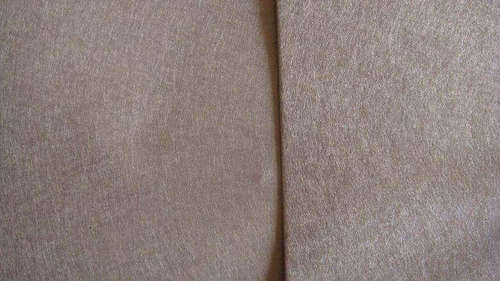
Short Fiber
A single powder-like metal fiber can be produced by a specially designed process, which is called short fiber with a long diameter (L / D) range of 100. These short fibers can be used directly or in combination with metal powder to carry out sintering filtration, which has the structure of ultra-high filtration level and unique permeability.
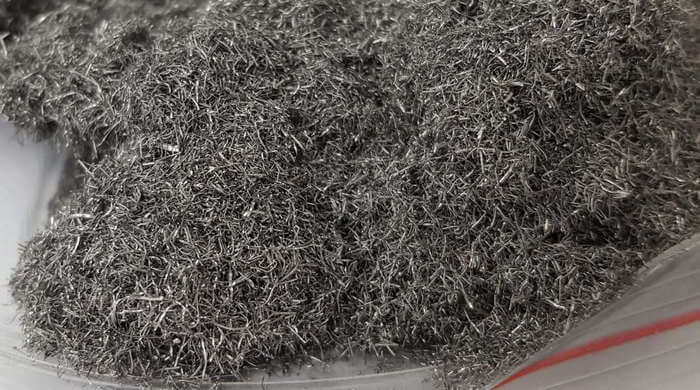
Polymer Particles
Other metal fiber products are polymer particles or particles composed of metal fibers. Several bundles of fibers are glued together with various sizing agents, and enough compatible extrusion coating is applied. After these coatings are cut into small particles, they can be used as additives to produce engineering conductive/shielding plastic parts through injection molding and extrusion. The unique advantage of metal fiber is that it can form a conductive network and a relatively limited volume of conductive additives.
Nonwovens
Like traditional textile fibers, non-woven fabrics or felt can also be produced with metal fibers. In rare cases, needling can be used to entangle fibers and obtain needled felt.
Metallic Fiber Fabric (Yarn)
An endless bunch of stainless steel fibers can be transformed into yarn by spinning. There are two types of yarn: one with low fiber content and the other with high fiber content. The former has about 275 filaments, which can be converted into filaments by twisting them in bundles. Bundles of thousands of fibers are commonly used to convert fibers into spinning. This can be done by tensile breaking and subsequent conventional yarn spinning techniques. This results in 100% metallic yarn. In the spinning process, the wire harness can be blended or blended yarn can be produced. It can be blended with cotton, polyester, and wool.
Subsequently, metal yarn can be further transformed into various textile products by using the textile process. It can be woven (round, flat, warp). Blended fabrics can be obtained by mixing metal yarns with other yarns, or by using yarns with two fibers inside, so they are already blended by themselves.
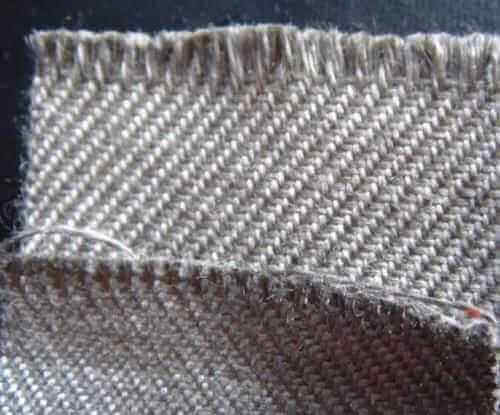
Understanding Metal Fiber Manufacturing Methods and Choosing the Right One for Your Application
In summary, the four primary metal fiber manufacturing methods—Cluster Drawing, Melt Spinning, Cutting, and Mechanical Vibration Machining—each provide unique benefits depending on the specific application. Whether you need high-precision filtration, cost-efficient production, or enhanced material properties, understanding the differences between these methods allows you to make an informed decision. By choosing the right method, you ensure optimal performance and durability for your metal fiber applications in industries like filtration, shielding, and material reinforcement.